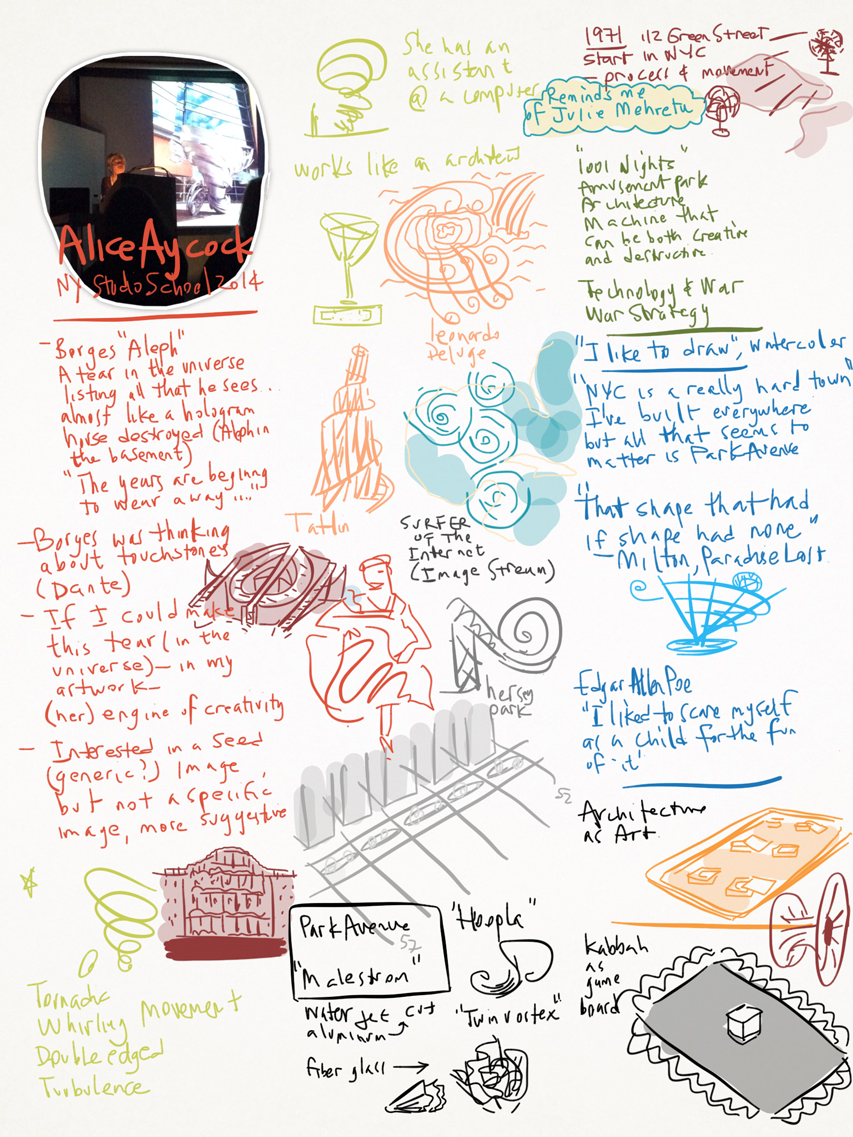November 12, 2014
Alice Aycock Lecture at the NY Studio School

Alice Aycock presented her oeuvre at the New York Studio School last night.
Aycock was a huge influence on me when I was an undergraduate architecture student. Her work showed me out of the box canyon of architectural practice education which emphasizes a design solution as a Venn diagram resultant of client/site/regulation... Aycock reminded me then that a fourth domain needed to be in the mix: the architect's (artist's) imagination.
As to this inspiration, I'm mostly referring to her work of the 70's and 80's, whose experiential aspect seems to intersect with literature... as contrasted with her later sculpture, which seems to anchor itself in a singular phenomena, such as tornados, whirlpools, hurricanes, etc. This shift, from my point of view, brings her closer to the domain of Frank Stella's literal-izations of paintings in three dimensional space. This is a relationship that deserves more analysis, too much of a task to take on in this blogpost. But one aspect that stands out is both artists' relationship of sculpture to painting and drawing. Stella is well rooted and his three dimensional artworks blur the distinction between the venerable categories of art. Aycock never had the natural affinity that most artists have for drawing. Alienated from it, she first made installations in the late 60's and early 70's (fans blowing drifts of sand in gallery spaces), she worked "out of the box" because she was never in the box, the box of traditional art practice, in the first place. So she fought to win some territory in the domain of drawing and she chose isometric drawing as her port of entry, no doubt an influence from other distinguished artists of that time, such as Sol LeWitt. Isometrics led to the influence of architectural practice and as computers bloomed, Aycock was able to transition her practice seamlessly, taking advantage of computer aided design to make sculpture. Something to think about: the difference between traditional sculptural training which emphasizes the intimacy of material manipulation and the distance an architect has to conception and fabrication... the "dirty" hands (oilstick under the fingernails, for example) of Richard Serra or Louise Bourgeois compared to the "clean" hands of Gehry or Mies.
Posted by Dennis at November 12, 2014 9:37 AM
Leave a comment